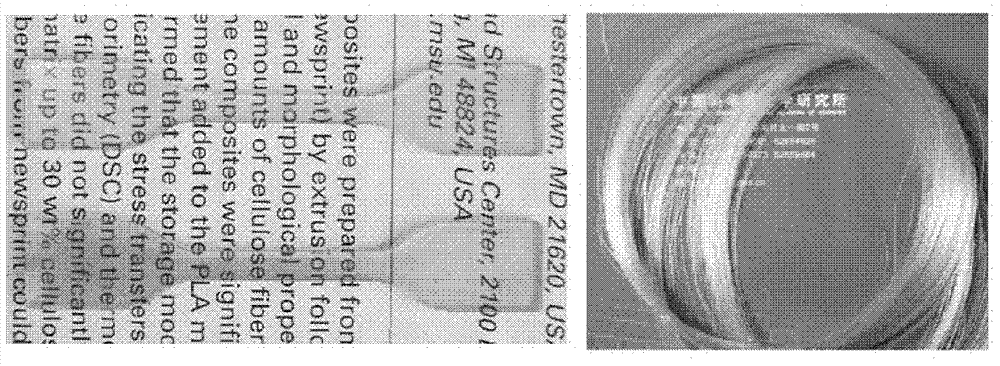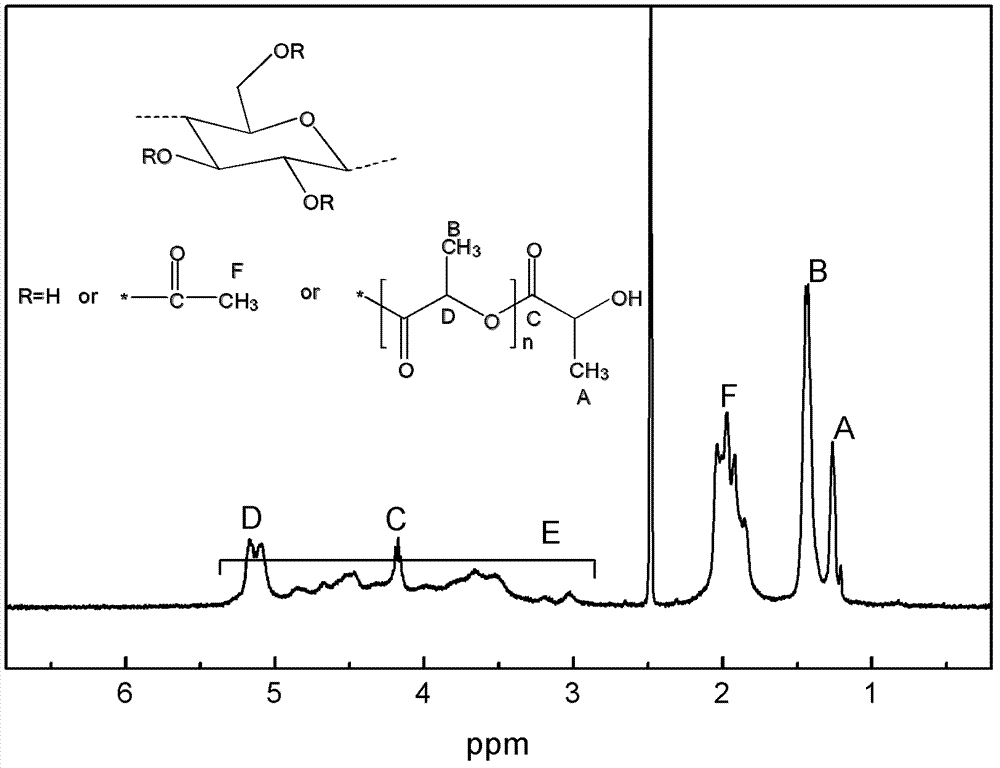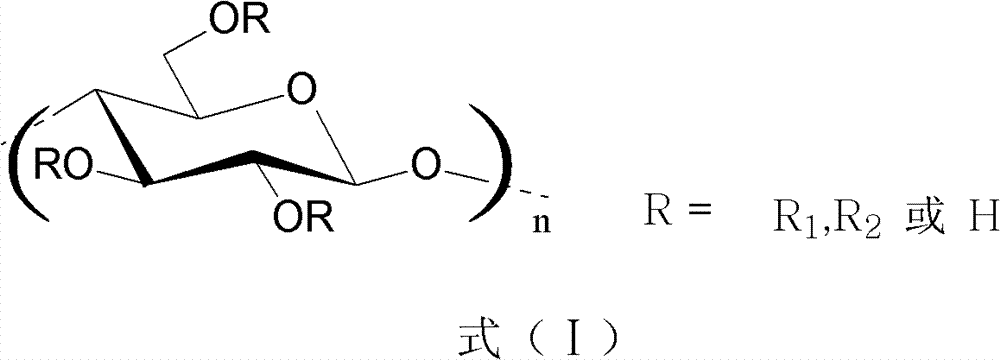Method for preparing cellulose ester grafted aliphatic polyester copolymer
An aliphatic polyester and cellulose ester technology, applied in polyester coatings, polycarbonate coatings, coatings, etc., can solve the problems of high price and poor mechanical properties of cellulose esters, and achieve simplified production process and easy operation. , The effect of simple production process
- Summary
- Abstract
- Description
- Claims
- Application Information
AI Technical Summary
Problems solved by technology
Method used
Image
Examples
Embodiment 1
[0032] Embodiment 1: Preparation of cellulose acetate grafted polylactic acid
[0033] Add 300 grams of ionic liquid AMIMCl, 15 grams of pulverized cotton pulp in a 0.5-liter vacuum mixer, and banbury for 2 hours at 80° C. to dissolve the cellulose evenly; ratio of 1:1), 80 ° C banbury reaction for 2 hours; then add 11.3 grams of DMAP (the molar ratio to the hydroxyl group in the cellulose is 1:3) and 80 grams of lactide (the molar ratio to the hydroxyl group in the cellulose is 2 : 1), vacuumize 80 DEG C banburying reaction for 5 hours; Open the banbury mixer after the reaction finishes, the reaction mixture is poured into water, stir and precipitate the product, filter, wash several times, dry, obtain white powdery cellulose acetate Ester grafted polylactic acid products. The product was dissolved in deuterated DMSO, and its H NMR spectrum was tested. Calculated according to the spectrogram, the degree of substitution of its acetyl group is 1.8, the degree of substitution ...
Embodiment 2
[0040] Embodiment 2: Preparation of cellulose propionate grafted polylactic acid
[0041] In a 250 ml flask, add 100 g of ionic liquid AMIMCl, 6 g of microcrystalline cellulose, and stir overnight at 50° C. under nitrogen to dissolve; Propionic anhydride (the molar ratio of the hydroxyl group in the cellulose is 2:3), stirred and reacted at 50°C for 1 hour; then add 64 grams of lactide (the molar ratio of the hydroxyl group in the cellulose is 4:1), and heat up to 80 ℃, grafting reaction under nitrogen protection for 5 hours; the mixture was precipitated in water, filtered and washed several times to obtain a white powdery cellulose propionate grafted polylactic acid product, the degree of substitution of the propionyl group was 1.7, and the polylactic acid The degree of substitution is 0.9, the degree of polymerization of polylactic acid is 5.6, and the grafting rate of polylactic acid is 58%.
Embodiment 3
[0042] Embodiment 3: Preparation of cellulose butyrate grafted polylactic acid
[0043] Add 200 grams of ionic liquid BMIMCl, 9 grams of microcrystalline cellulose in a 500 ml flask, stir and dissolve under nitrogen at 90°C for 2 hours; Add 96.0 grams of lactide (the molar ratio to the hydroxyl group in the cellulose is 4:1) and fill with nitrogen Continue the grafting reaction at 90°C for 4 hours; precipitate the product with water, filter and wash several times to obtain a light yellow powdery cellulose butyrate grafted polylactic acid product, the degree of substitution of butyryl is 1.5, and the degree of substitution of polylactic acid The degree of polymerization of polylactic acid is 1.3, the degree of polymerization of polylactic acid is 4.2, and the grafting rate of polylactic acid is 60%.
PUM
 Login to View More
Login to View More Abstract
Description
Claims
Application Information
 Login to View More
Login to View More - R&D
- Intellectual Property
- Life Sciences
- Materials
- Tech Scout
- Unparalleled Data Quality
- Higher Quality Content
- 60% Fewer Hallucinations
Browse by: Latest US Patents, China's latest patents, Technical Efficacy Thesaurus, Application Domain, Technology Topic, Popular Technical Reports.
© 2025 PatSnap. All rights reserved.Legal|Privacy policy|Modern Slavery Act Transparency Statement|Sitemap|About US| Contact US: help@patsnap.com



